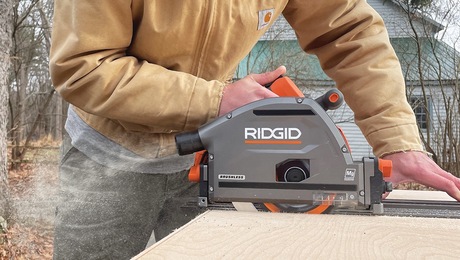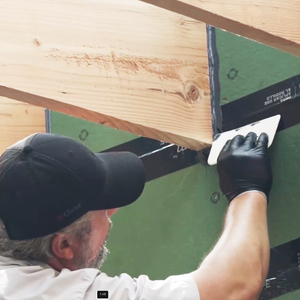Max depth birdsmouth cut for rafter

How many of us are under the 1/4-of-depth or some other fraction rule, by code and inspection, when cutting birdsmouths in rafters?
I have attached a sketch that shows how, for a 2×12 rafter with full-wall notch over 2×6 wallframe and 1/2″ sheathing, if wanting the springline from the inside edge, the max pitch for the roof is 6 3/8 in 12.


















Replies
I posted this over at JLC . I really don't know what the correct answer is , only know what I was taught many yrs. ago.
""Just a clarification here please.
Do you use the verticle dimension of the rafter (plumb cut) or the size dimension (11 1/2" for a 2x12) as the depth to calculate the 1/4 depth of cut from?
I have often wondered just how deep was acceptable but have never had anyone question what I did so I am interested in this .
To me (using my frail logic) it seems that as long as the bottom edge of the rafter is fully supported by the plate it shouldn't matter how deep the cut.
I understood that the intent of the code was to prevent splitting of the member at the top of a notch , but splitting would require that the portion below the split line would have to be free to be forced down under load. This cannot occur if it is fully seated on a plate no matter how deep the cut .
The load bearing capacity is determined by the deepest supported point (measured perpindicular to the plane of the member) of the framing member is what I was taught, which may not be correct I guess..""
I think I can safely say I always abide by this rule. I typically use a 3 - 3 1/2" seatcut on 2x12s. When I use 2x8 rafters, I use a 2-2 1/2" seatcut.
Oops!
I never heard of that rule. I always tried to leave 1 3/4" of rafter depth per foot of tail.SamT
So much of the success of a company is not determined by degrees but temperature. gb93433 83537.46
I never cut more than 1/3rd the depth.
Maybe I'm misreading this, but there is no max depth as long as the heel of the birdsmouth contacts the edge of the plate. A 2x4 could terminate with an incomplete birdsmouth on a 2x8 wall plate and not lose any strength.
The notching requirments don't apply to common birdsmouths under UBC or IRC.
Beer was created so carpenters wouldn't rule the world.
I was taught many years ago the seat cut in the birdsmouth is the thickness of the wall and sheathing like your drawing shows . That's what determined the depth of the cut
try that on a 16/12, or even a 12/12. you won't have enough HAP ( height above plate). the rule is if 2/3 of the HAP remains and 1/3 is being cut away strength will be maintained and have adequate bearing on all points.
i suggest reading "roof framing," by marshall gross. it's the most comprehensive roof cutting books i've read.
I have heard, but have no way to confirm, that UBC specifies 1/3 max, while IBC is more restrictive at 1/4.
Do you have access to the current code language, and if so, can you cite it here, so we all can see?
This fella is right. Shame how many carpenters don't go to school, dumb as they come. Get your masters/redseal or even your gold seal. In my neck of the woods... the 2/3 rule certainly applies, provided that you have a minimum of 89mm HAP,WAP, whatever you want to call it. That is just for common rafters. Hips/valleys must be 50mm bigger than the stock used for the commons. Check your rafter tables to see what you can get away with... simple stuff.
This fella is right. Shame how many carpenters don't go to school, dumb as they come. Get your masters/redseal or even your gold seal. In my neck of the woods... the 2/3 rule certainly applies, provided that you have a minimum of 89mm HAP,WAP, whatever you want to call it. That is just for common rafters. Hips/valleys must be 50mm bigger than the stock used for the commons. Check your rafter tables to see what you can get away with... simple stuff. Just also be sure to check with your local city hall for snowloads before going batshit crazy.